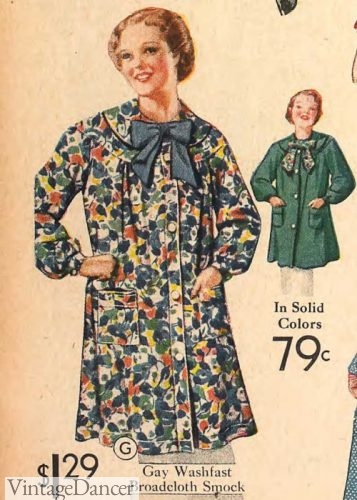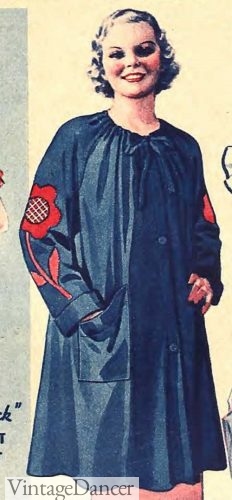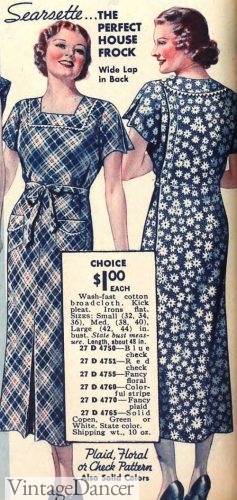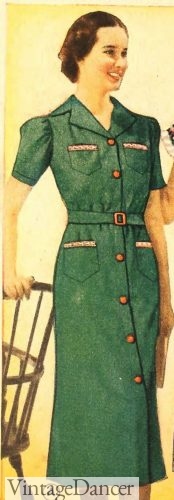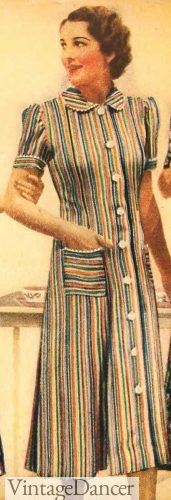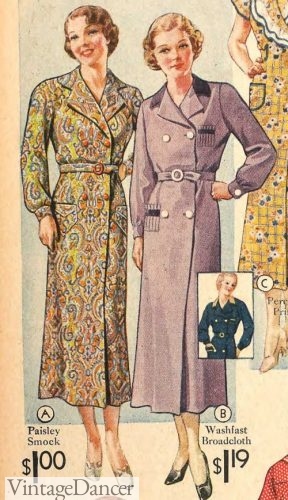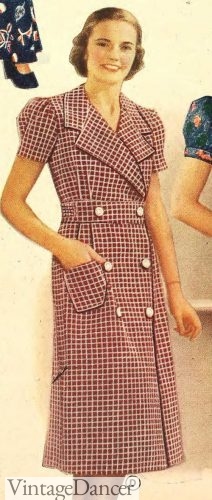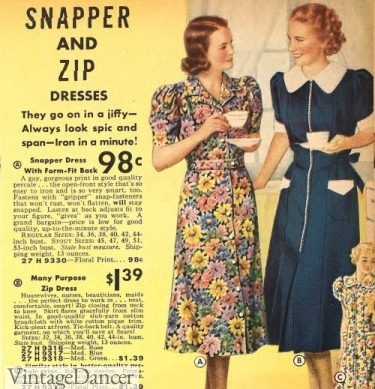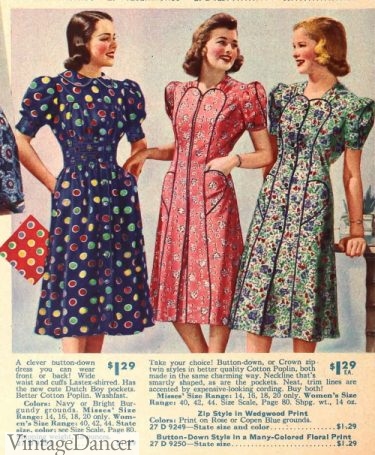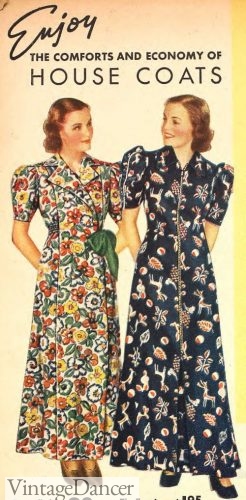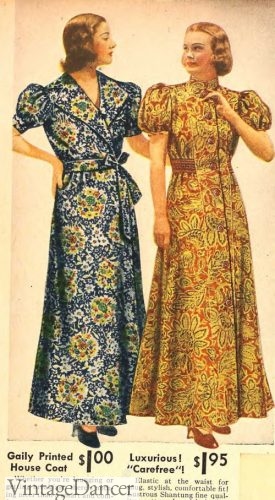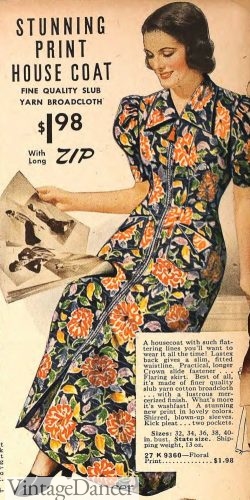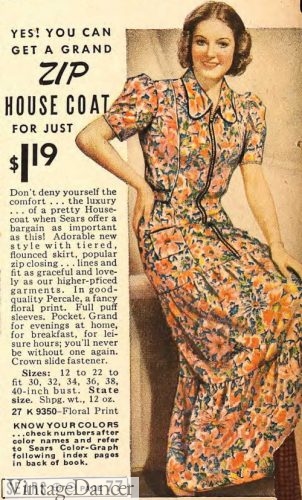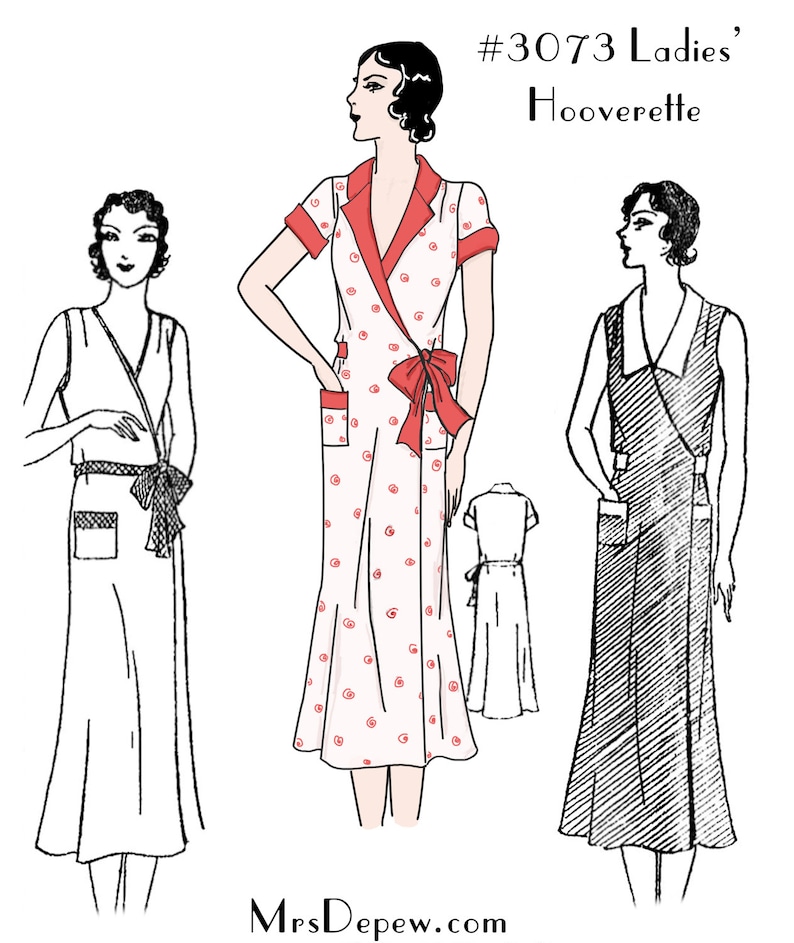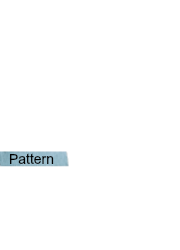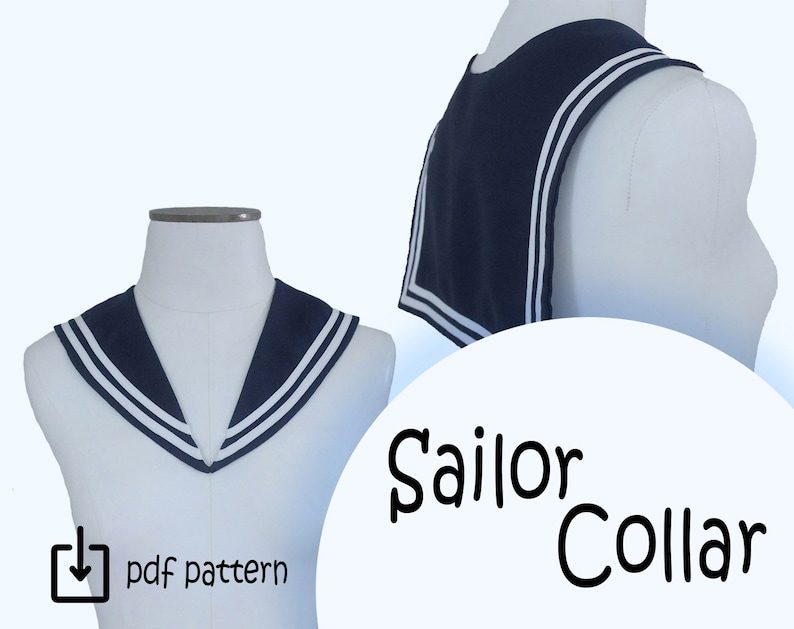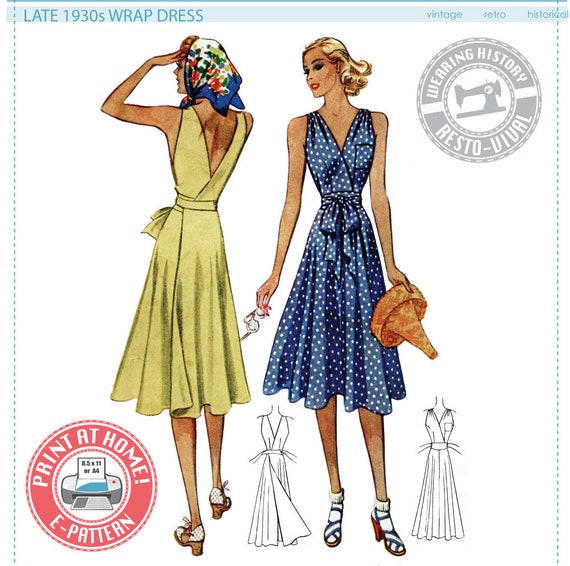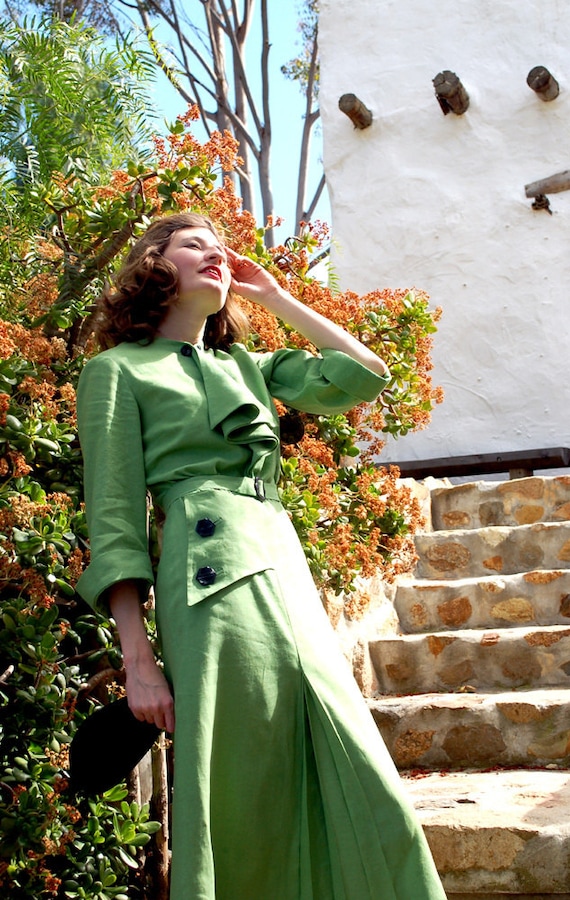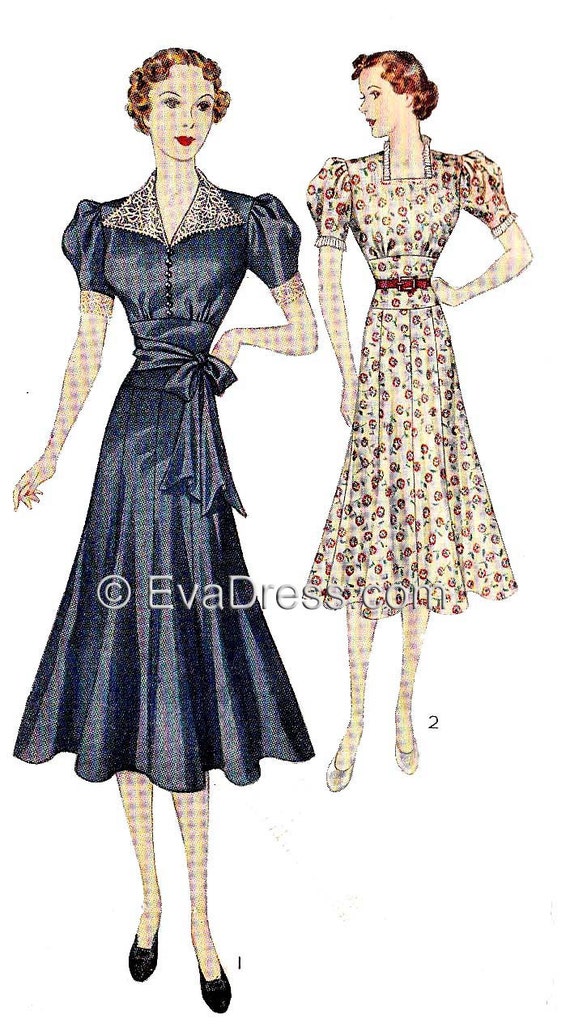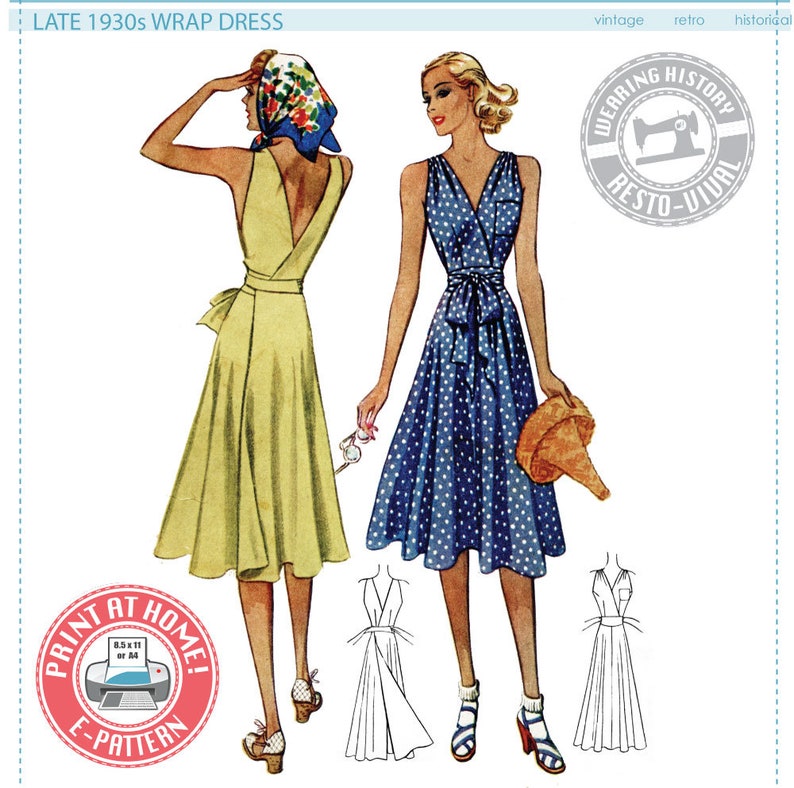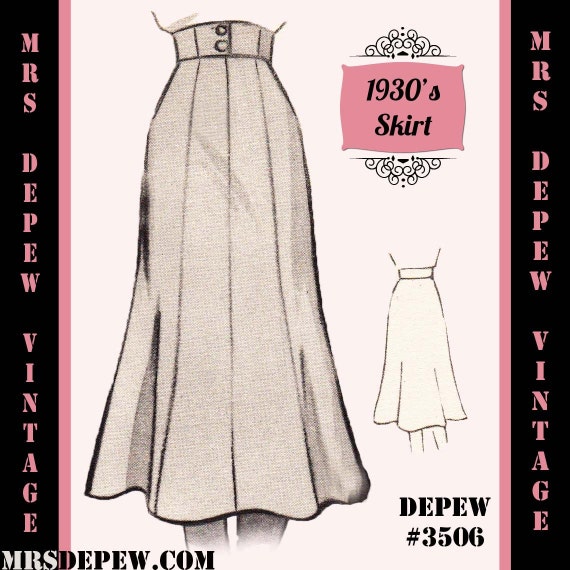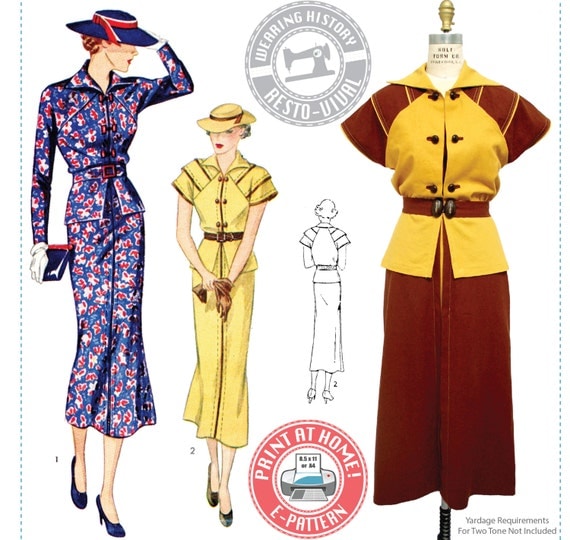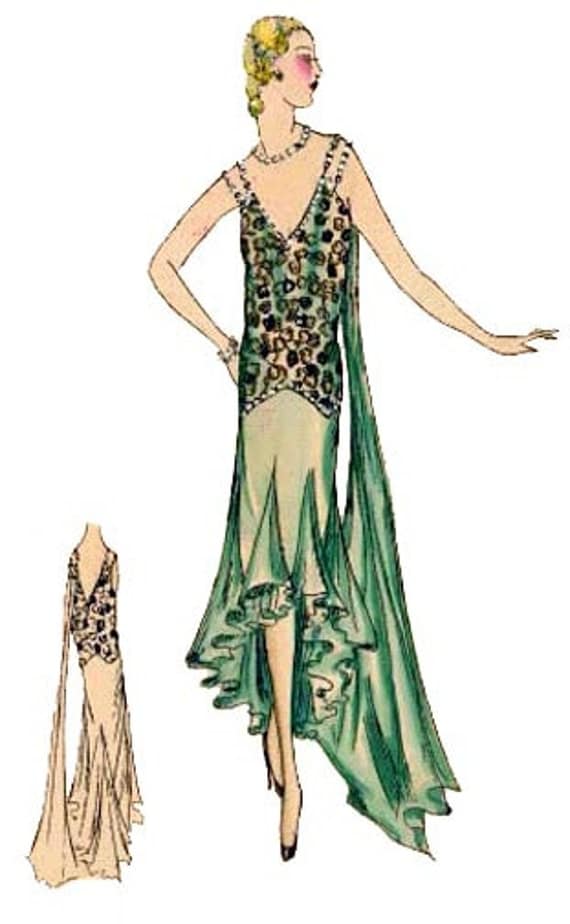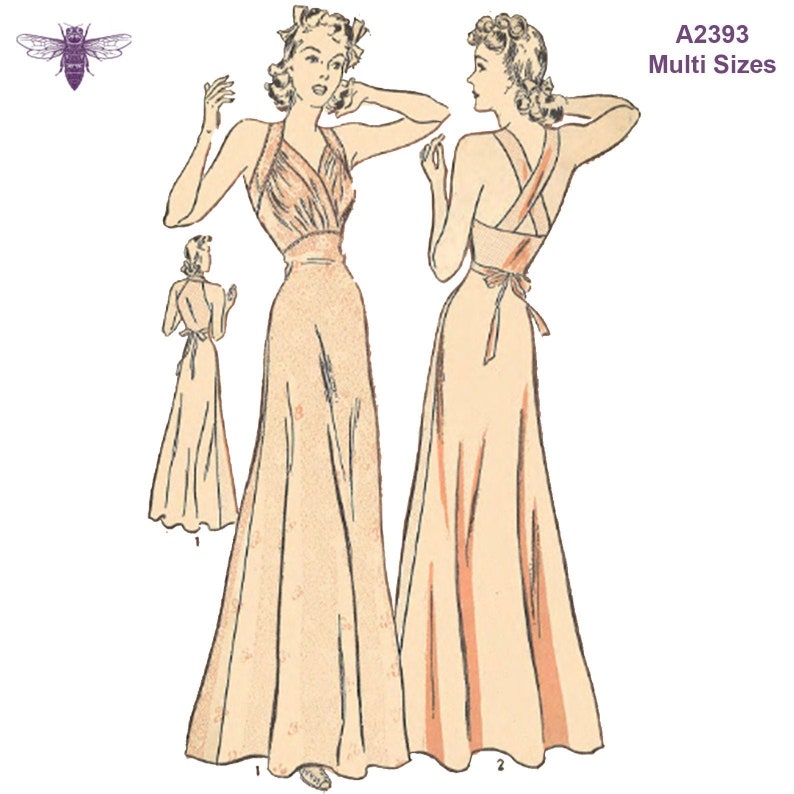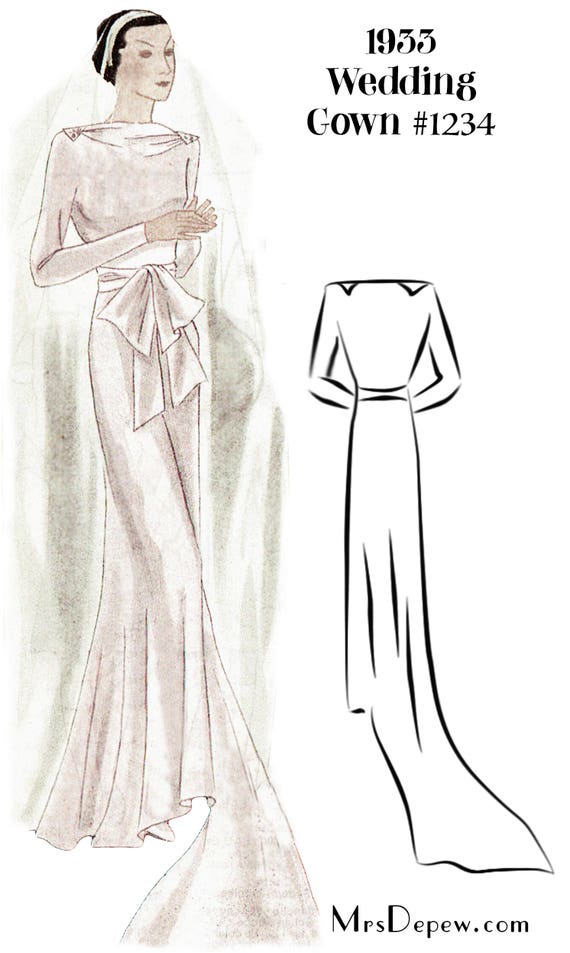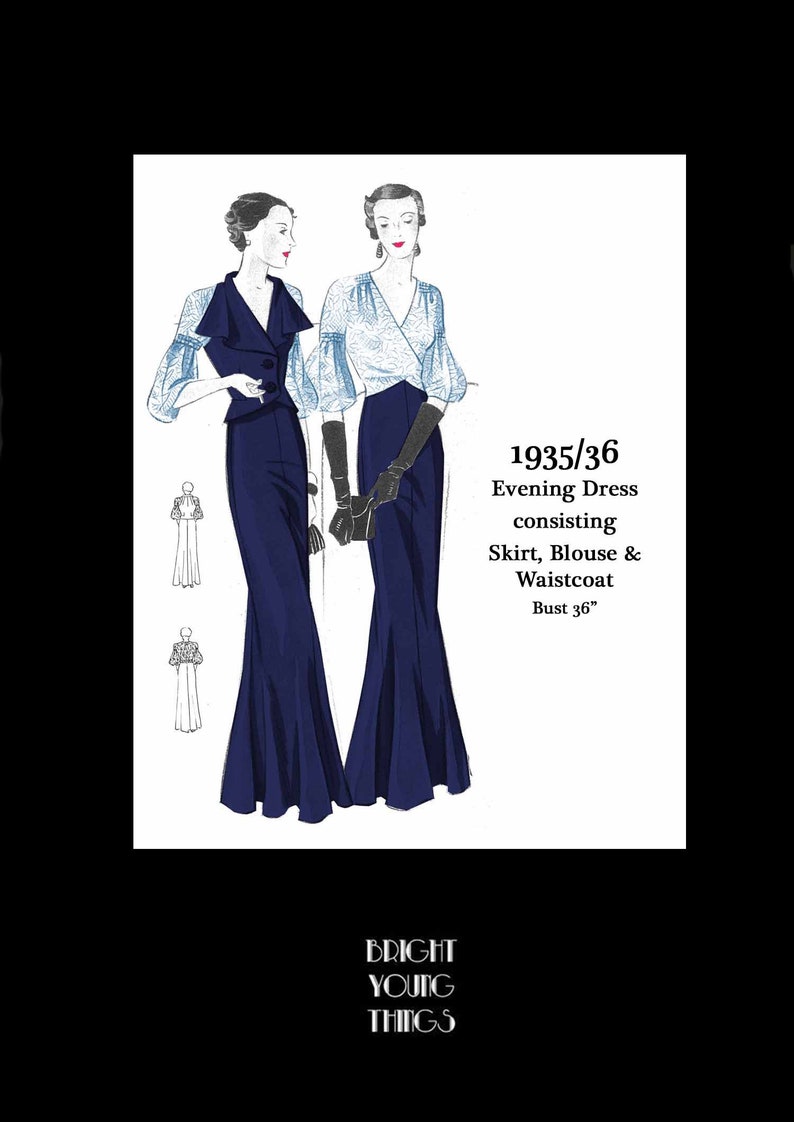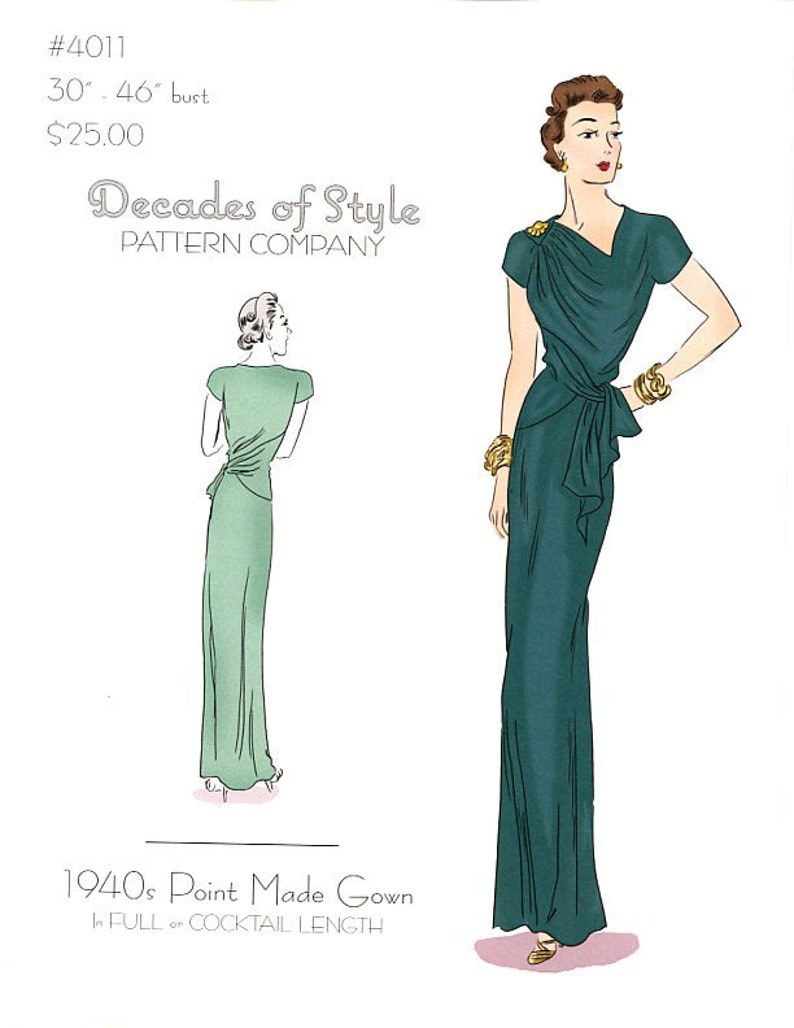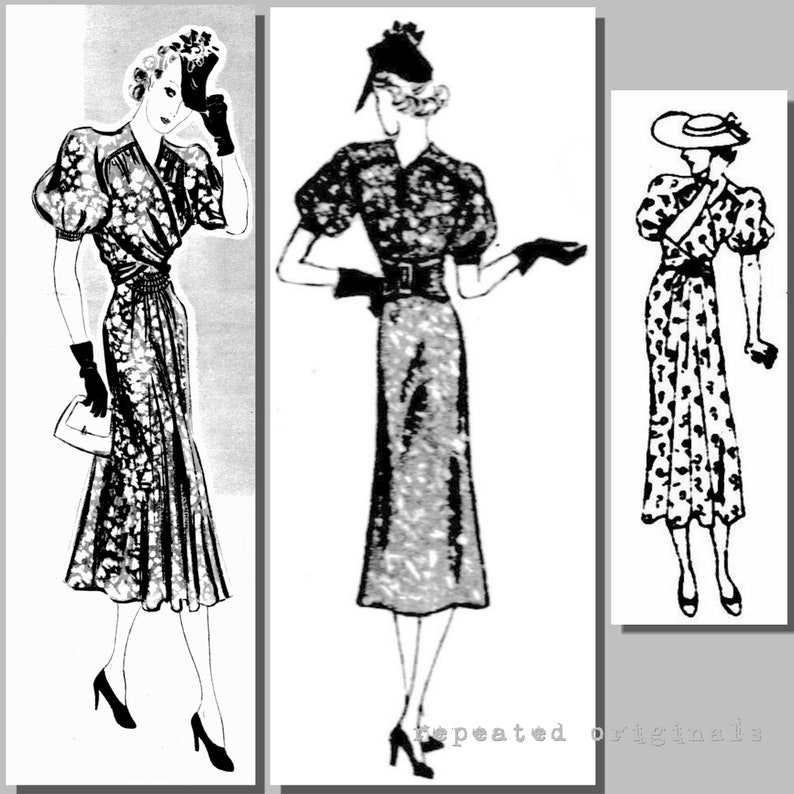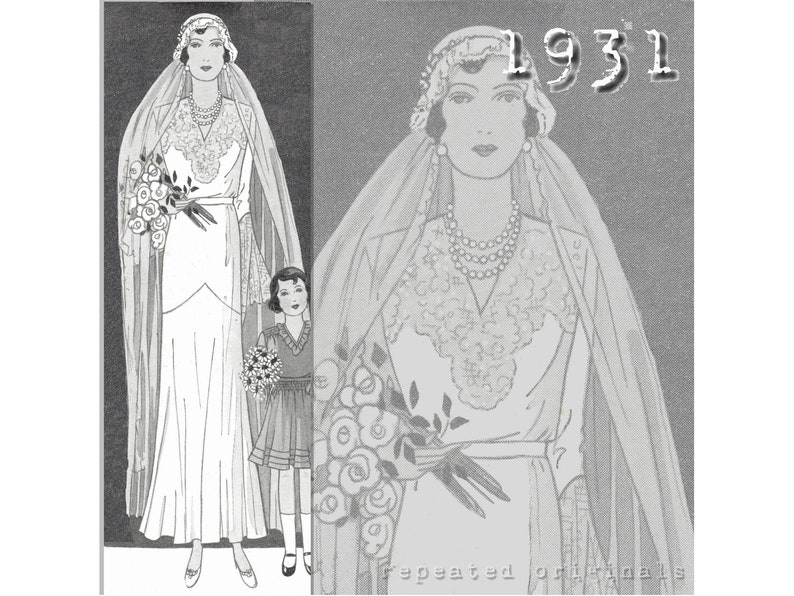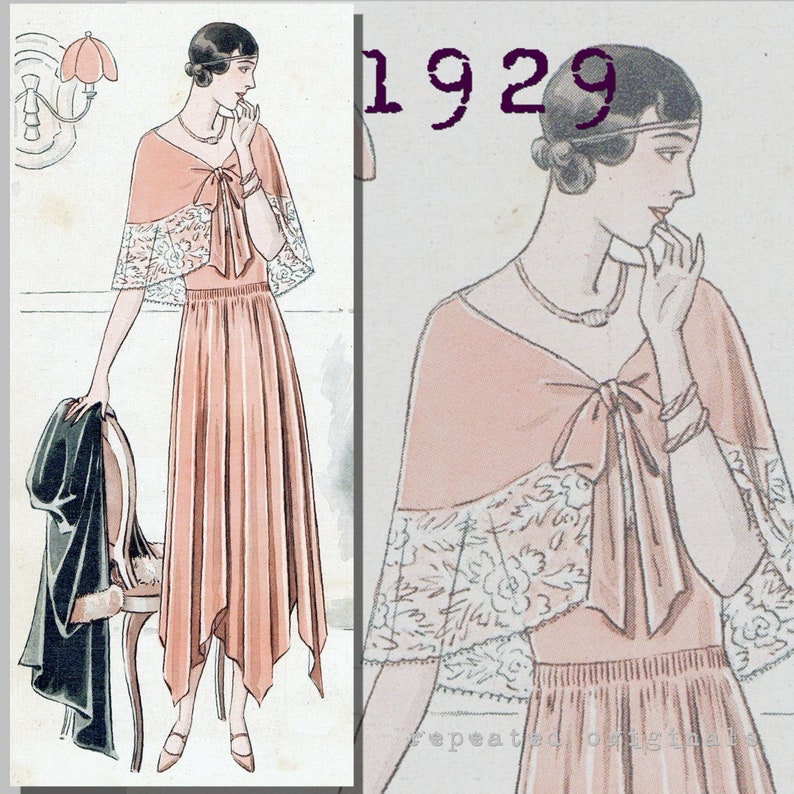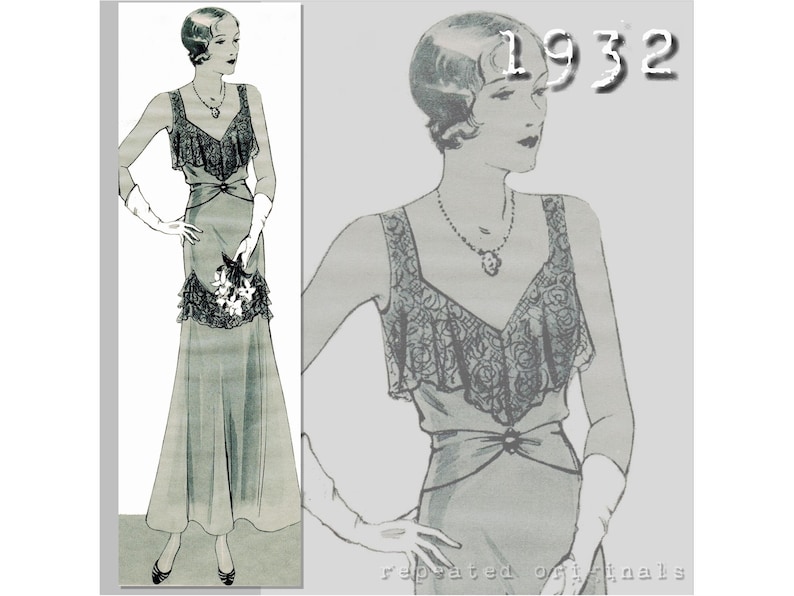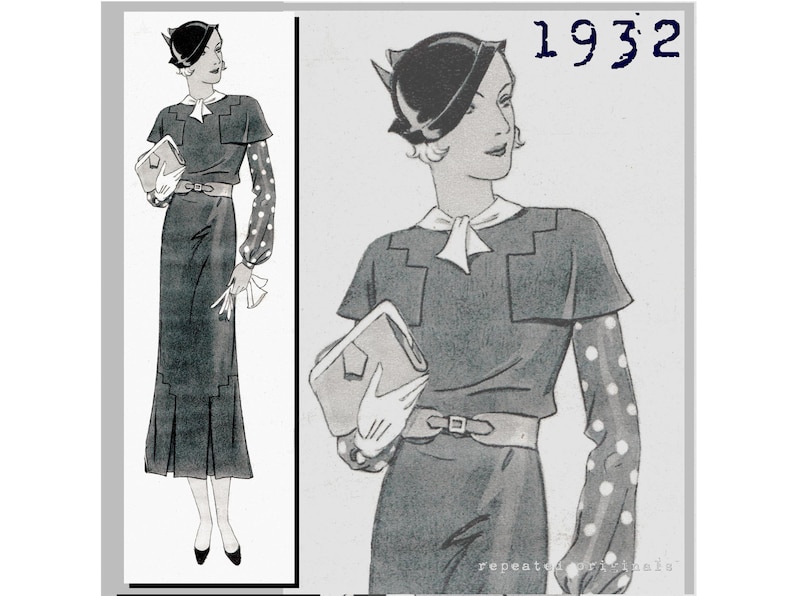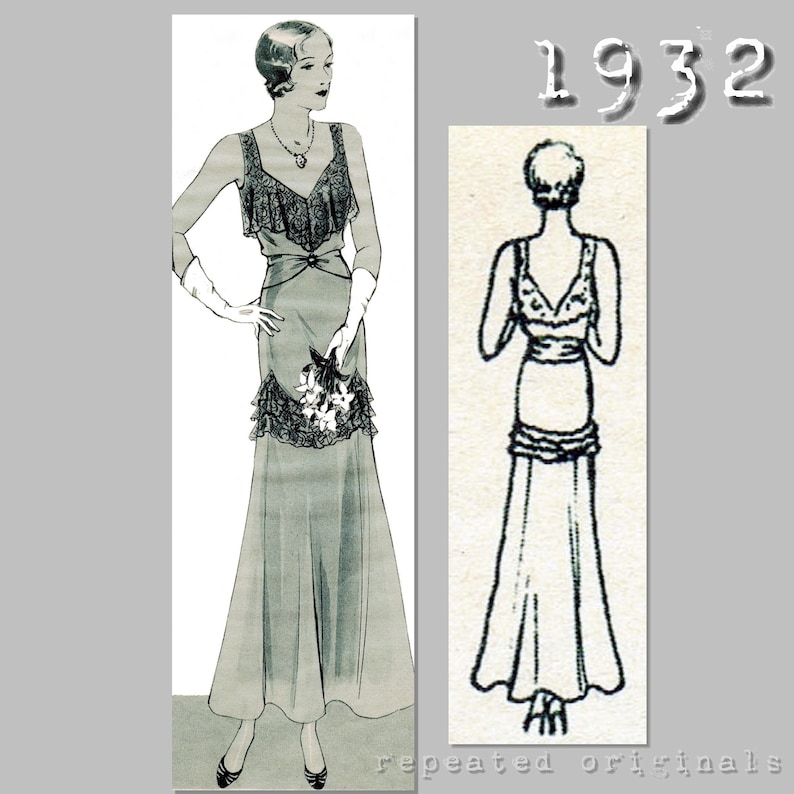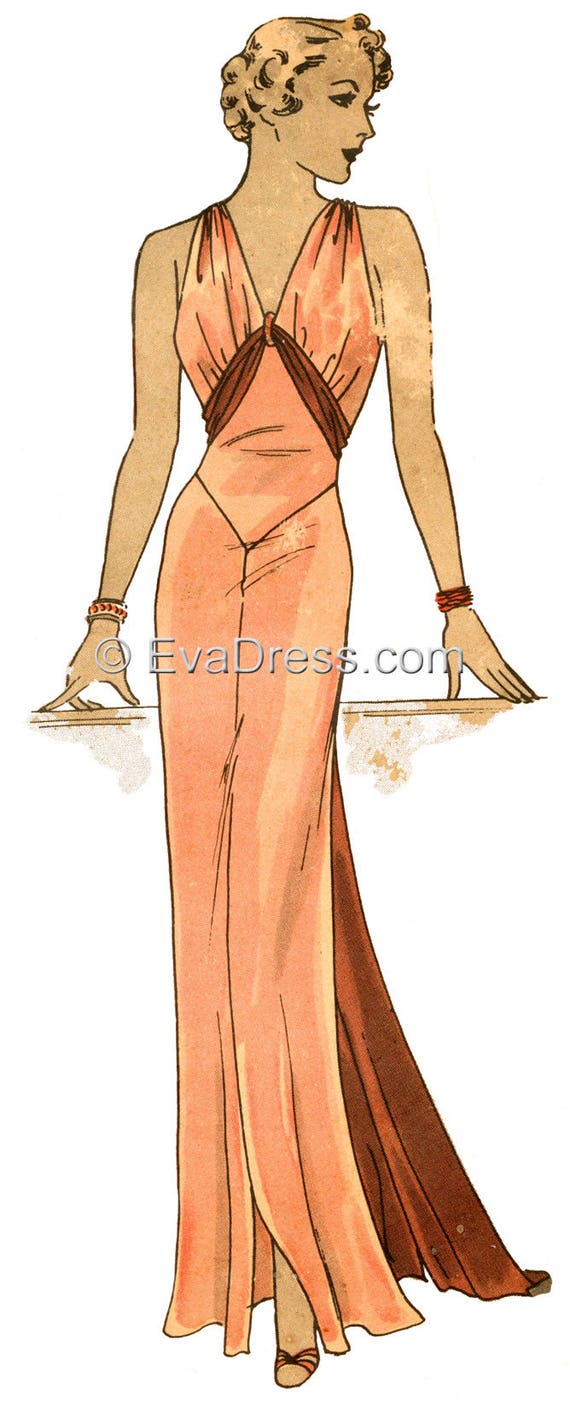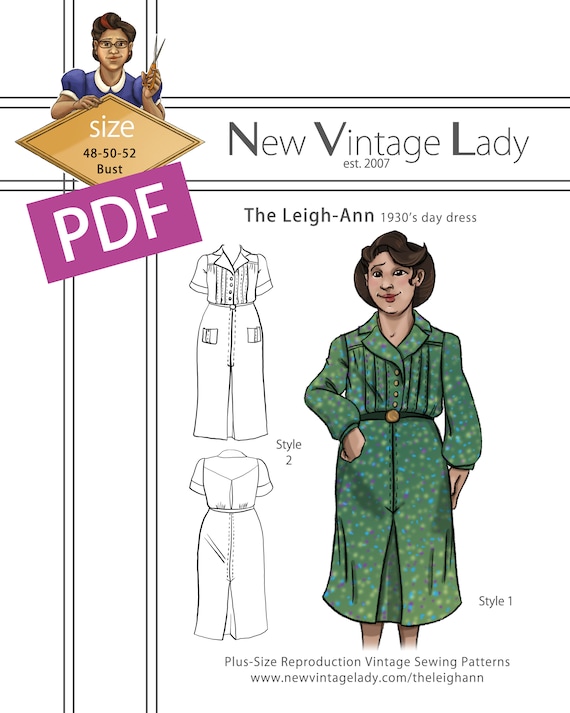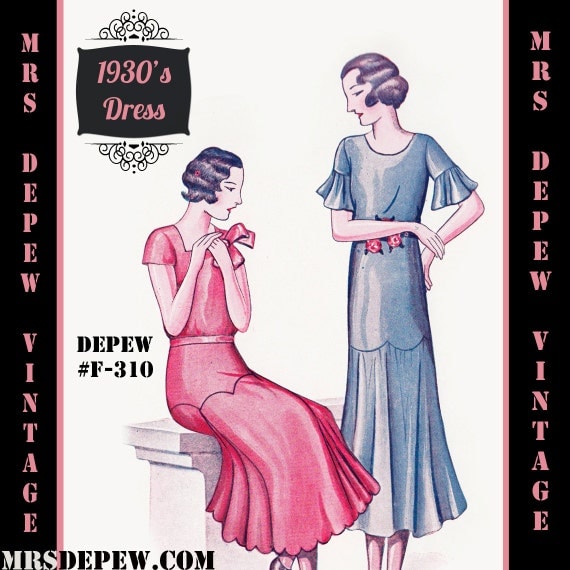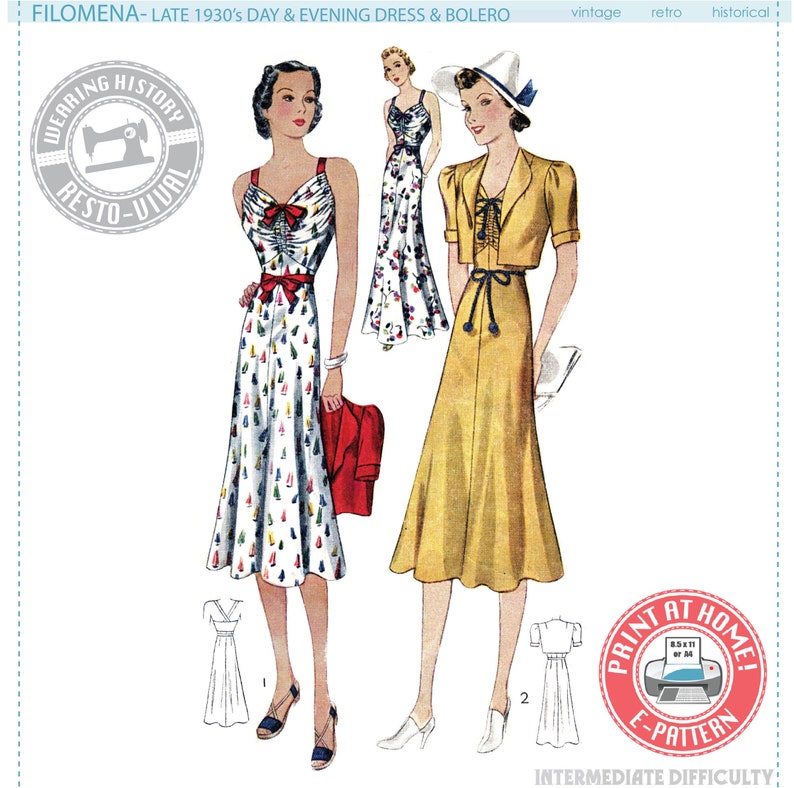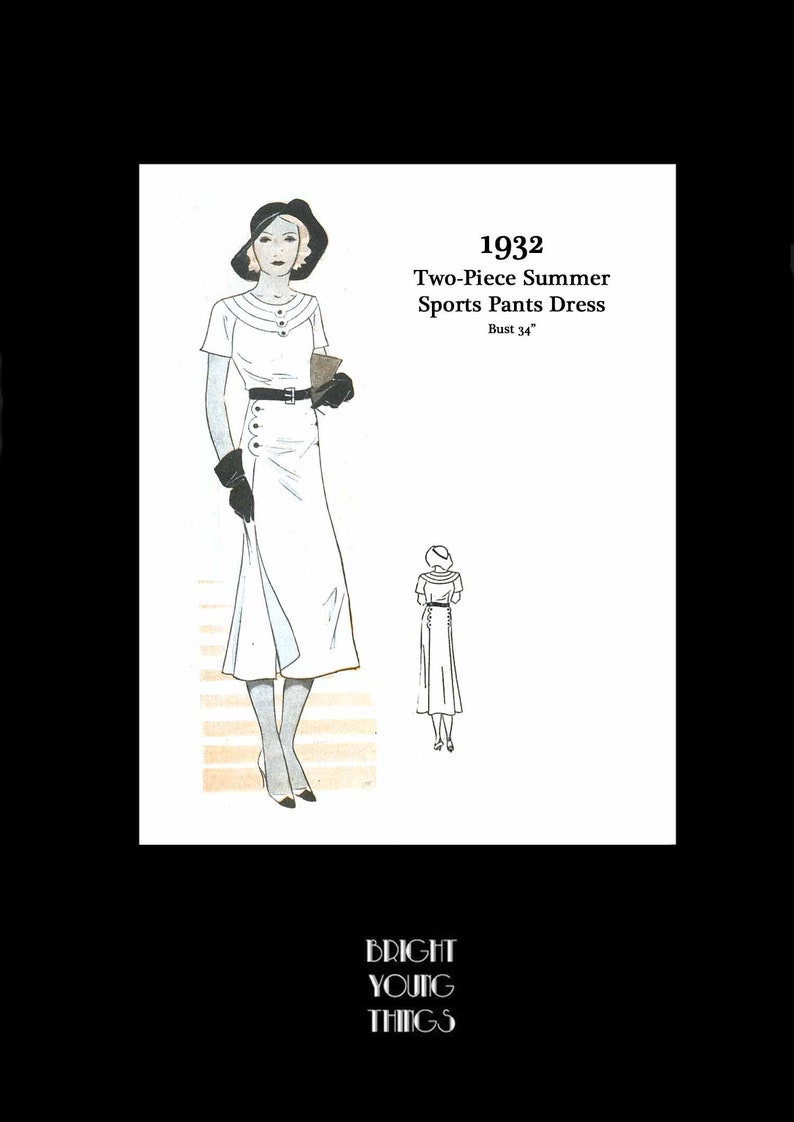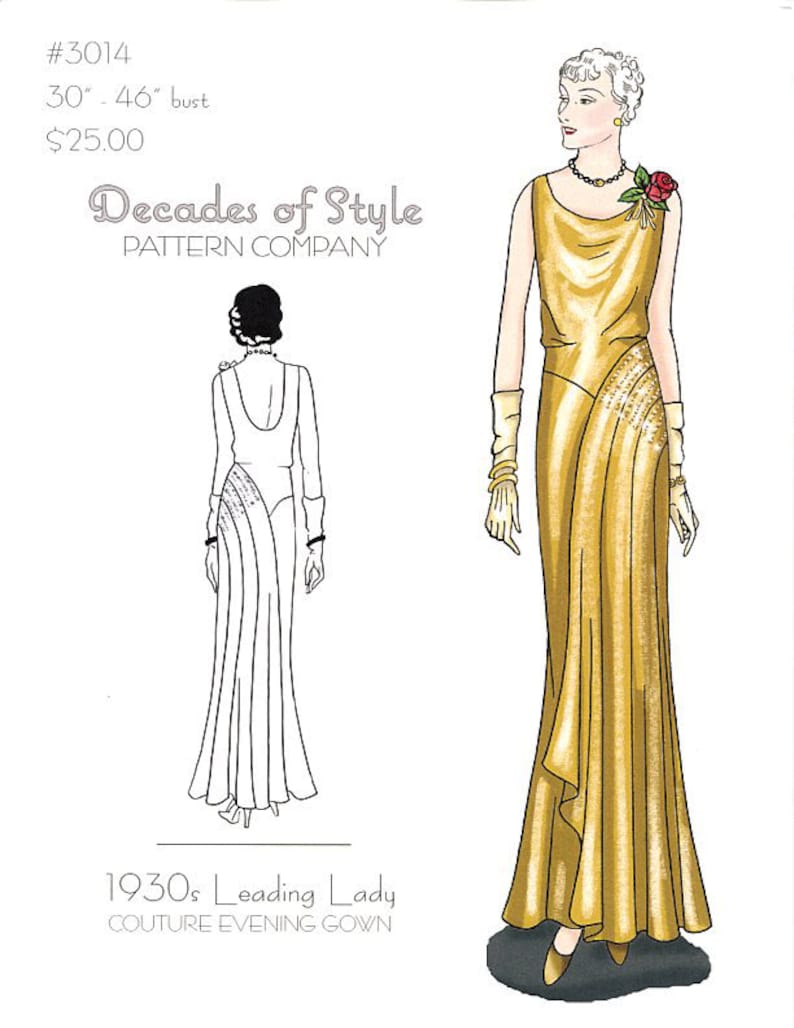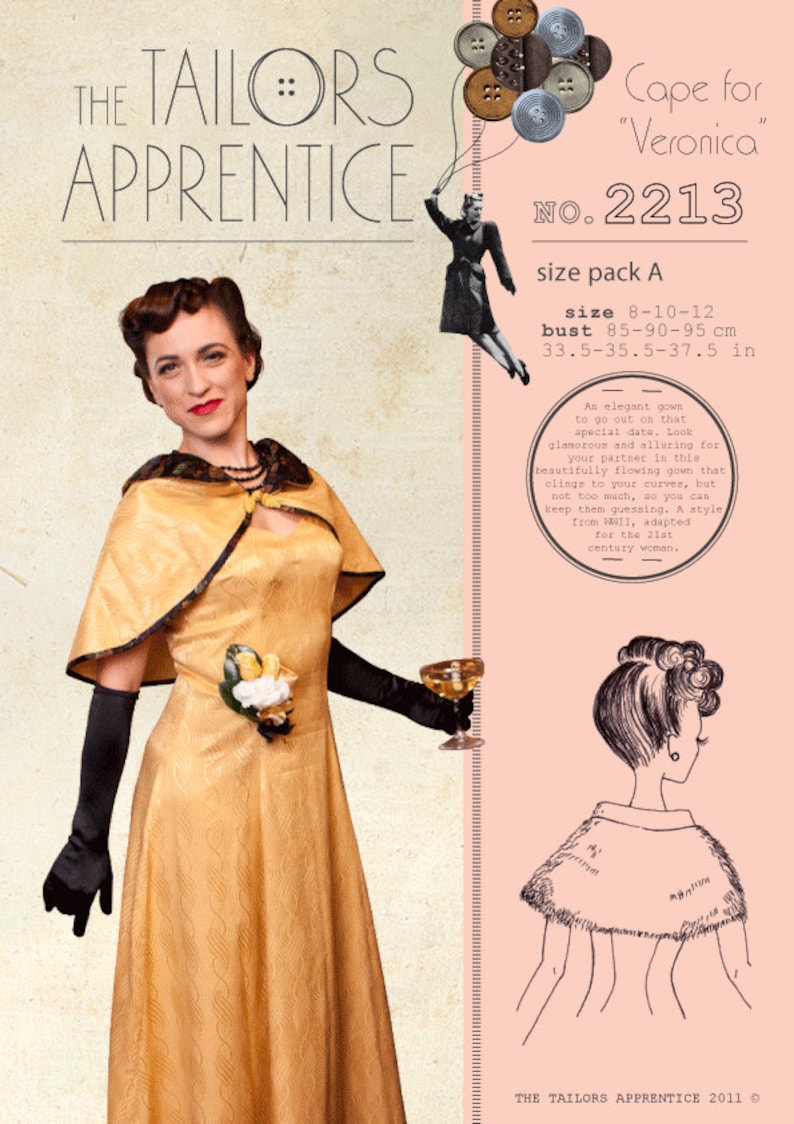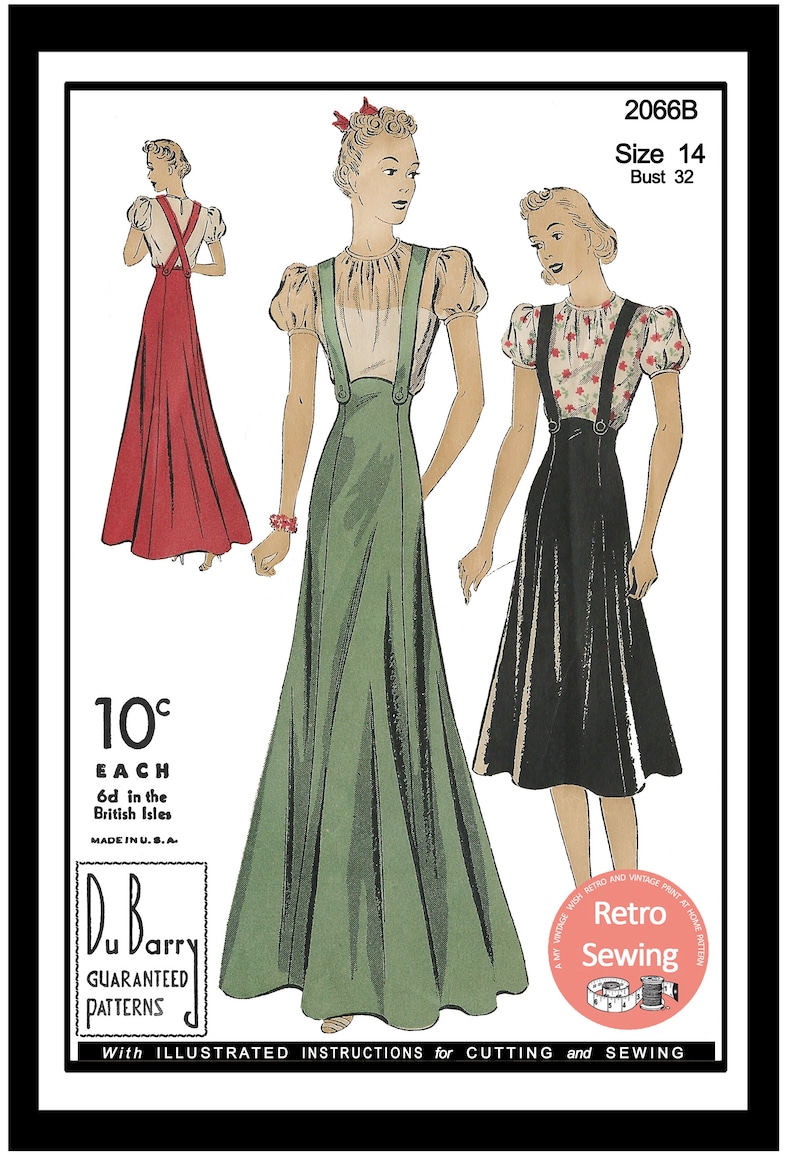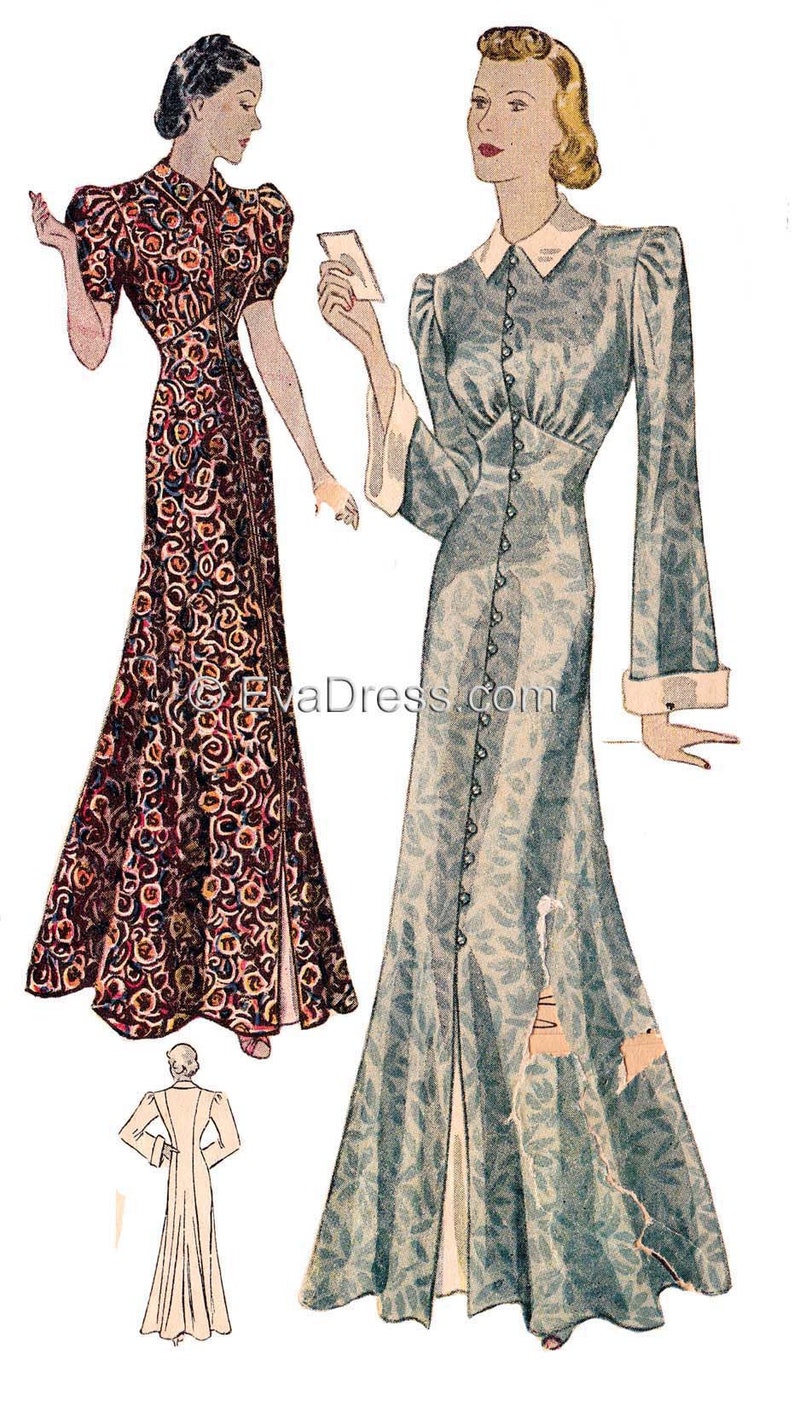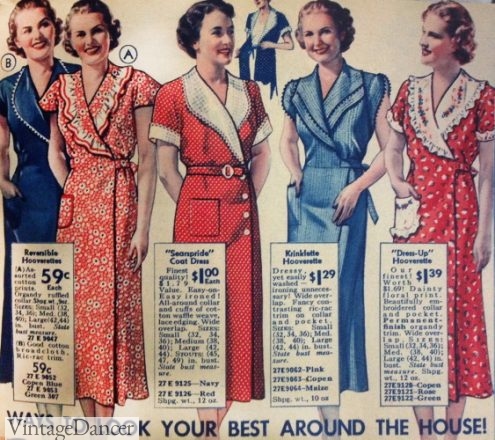
137 Hooverette House Dresses
A thirties housewife spent the majority of her time in 1930s house dresses. They were usually handmade with re-purposed or leftover scraps from other garments. Because only family would ever see her in her house dresses, the styles had more color, trim and “fun” elements to them. They were also practical for housework, with pockets appearing on most house dresses.
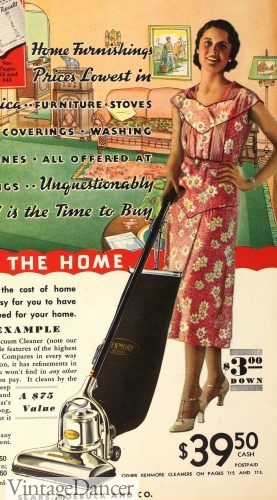
1933 housewife vacuuming in a nice day dress
Although 1930s house dresses were generally more simple than most thirties daywear and evening dresses, the day-to-day clothing of the average woman followed the same general fit and shape as most 1930s women’s clothing: puff or fluttery caplet sleeves; wide collars with lace, ruffles, or embroidery; a snug, high waist; and a skirt fitted through the hips that gently flared from mid-hip to the mid-calf hemline.
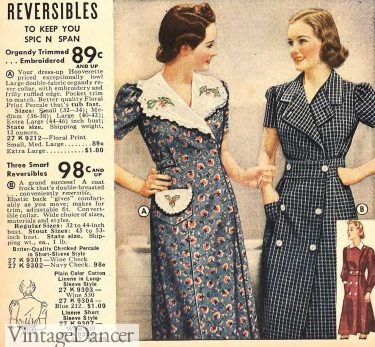
1938 reversible house dresses- Hooverette and coat style dresses
A wrap dress (often reversible), commonly referred to as a “Hooverette,” became the most popular 1930s house dress shape. Read more history about this dress style on FestiveAttyre.com.
1930s House Dress Elements
Sleeves were designed to make shoulders appear larger in order to slim the waist and hips. Sleeve styles included puffs, ruffles, caplets, and flutters. Wide collars were also used to visually inflate the upper chest and shoulder area. Sleeves on 1930s house dresses were almost always short, ending on the mid-upper-arm or higher for flutter and cap sleeves, and the longest sleeves ended at the elbow.
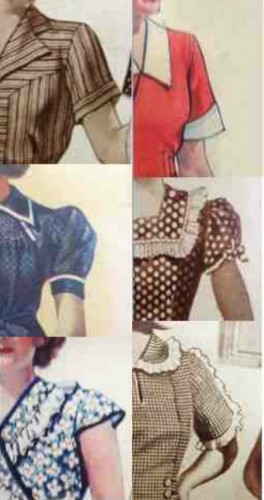
Sleeve types: square, puff, cap, cuff, gathered, ruffled
Smocks (apron shirts), which were worn over a woman’s house dress for particularly dirty work, often had long sleeves.
- 1936 smock apron
- 1935 blue smock apron with flower applique
Dresses for housework boasted larger armholes to allow more freedom of arm movement. Some house dresses had simple, straight, wide-cut shirt-sleeves with a cuff. These simple cuff sleeves were practically non-existent in other less casual thirties fashions.
It was a common service uniform trim as well, especially with contrasting white cuffs and collars. Unlike the squared shoulder of the mid 1940s, the sleeves of the ’30s often puffed up above the top of the shoulder.
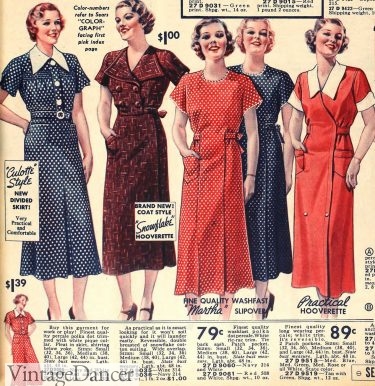
1936 house dresses, some with white collars and cuffs
Necklines of house dresses were very high by today’s standards: shallow V-necks, square necklines, high button up fold over collars, or small scoops. Collars were often trimmed with white ruffles, rick-rack, or binding. The reversible wrap “hooverette” dress had a shallow V-neck, shawl collar, and were usually trimmed with ruffles on the neckline and wrap. Some necklines mimicked the straps of a pinafore apron.
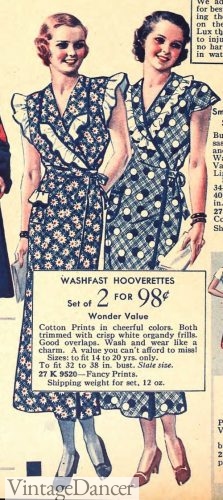
1936 ruffle trim wrap over hooverette house dresses
Re-using trim from an old dress was one way thrifty women saved on fashion during the Depression. A plain, cheap cotton dress could be purchased for less than $1 and spruced up with trim. Women were encouraged to always be in fashion, even if their budget was limited.

Neckline styles: Scoop, square, V-wrap, pinafore, wrap, uniform
Skirts in the thirties were generally fitted to the mid thigh before flaring out with hemlines reaching the midcalf. Clothes for work, meanwhile, were commonly cut a bit more loosely, though not to the point of being a true A-line skirt. They often featured multiple gores for ease of movement.
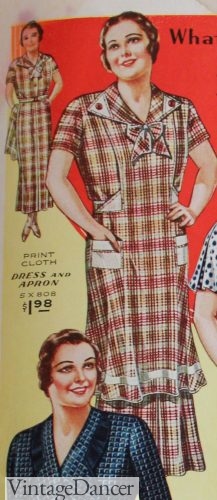
Lane Bryant catalog plaid house dress sold with matching apron
1930s house dresses usually had serviceable pockets on the mid thigh, often trimmed with lace or ruffles, while most women’s dresses meant to be worn out of the house did not have pockets at all.
1930s House Dress Styles
The House Frock, was another style of wrap dress but this time the wraping was done in the back. The dress slipped from the front like a smock and then overlapped in the back, attaching the left shoulder with a button. A tie belt cinched in the waist at the front.
House frocks looked like a pretty day dress with a midi hem, flutter or puff sleeves, and a femenine silhouette. They became house dresses with the addition of two hip pockets, the wrap back, small prints and minimal trim. The perfect blend between house and daytime fashion.
- 1935 house frock with a back wrap and tie belt
- 1936 slipover dresses with a wrap around the back
The shirtwaist dress that became so popular in the 1940s appeared in house dress fashion with buttons down the front of the bodice, like a blouse. Later in the decade, a functional and novel zipper down the front of the bodice, either stopping midway between the collar and the waist or going all the way down the length of the garment, became a trend.
- 1937 polka dot shirt house dress
- 1937 belted green shirt dress
- 1937 striped shirtdress
Coat Style House Dress
The princess coat styling was adapted into a house dress in the late 1930s. It feature wide notch wrap over collar with belt and 4 -6 double row buttons. It was easy to put on quickly yet looked nice enough to wear outside the home. Plain colors with contrasting trim or bold prints were popular.
- 1936 coat style house dresses
- 1938 windowpane reversible coat style house dress
Zippers
Later in the decade, a functional and novel zipper down the front of the bodice, either stopping midway between the collar and the waist or going all the way down the length of the garment, became a trend.
- 1938 zip or snap-button front house dresses
- 1939 button, zipper, button front house dresses
Zippers helped advance the ready-to-wear manufactured clothing industry with their affordable price point. Zipper pulls were sometimes monogrammed with one’s initials for free when buying from many catalogs.
1930s Housecoats
One style of house dress to use the long zipper was the housecoat. It was a full length dress meets robe that was worn over lingerie, nightgowns or possibly another dress. It was for use at home while making breakfast, after a bath, before bed, light chores, or general lounging.
With the zipper front it stayed in place better than a wrap robe and when made up in pretty floral patterns, looked like a dress rather then sleepwear. Buttons or the wrap style were also used to make up housecoats.
- 1938 Wrap and zipper housecoats
- 1937 wrap and button housecoats
- 1938 zipper housecoat
- 1938 zipper housecoat
Housecoat made in luxury fabrics such as taffeta, silk, or satin became hostess gowns, elegant long housedresses pretty enough to host tea with friends at home. They were not worn for household chores.
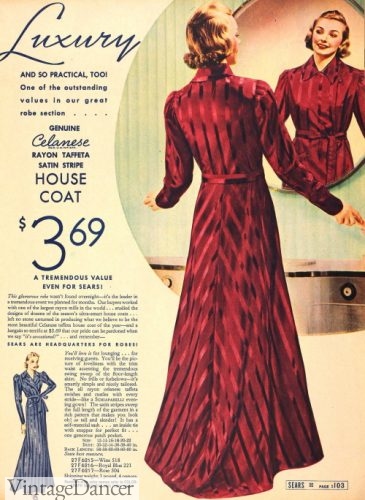
1937 satin house coat or hostess gown?
House Dress Fabrics
1930s house dresses were worn for work: cooking, caring for children, gardening, and cleaning, so the fabric had to be washable and durable — usually cotton percale or broadcloth.
Most house wear fabric was made of printed fabric, in a brilliant and varied almost dizzying array of patterns. Floral, polka-dots, plaids, stripes, geometric designs, novelty prints, and even paisley graced house dresses for women.
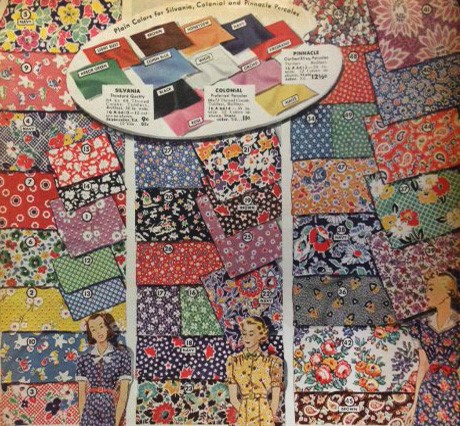
1930s Summer Dress Fabrics — Small Prints
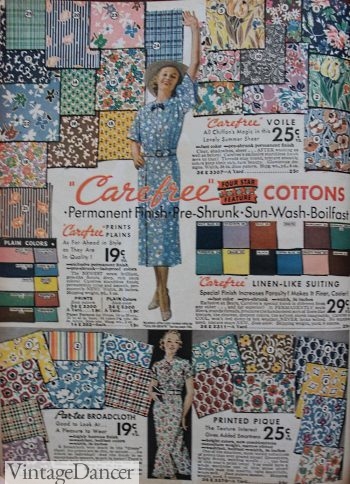
1937 Cotton Prints
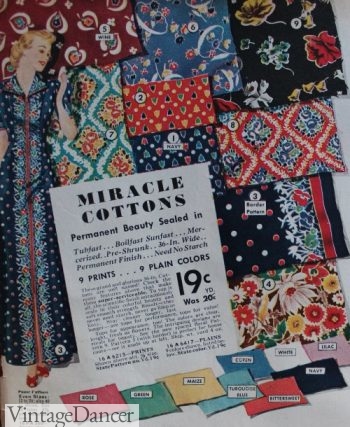
1938 floral prints and more
This concludes our look at 1930s house dress history. Next up, 1930s day dresses and afternoon styles.
1930s Sewing Patterns
You asked and I found them — 1930s house dress patterns and many other women’s Depression era sewing patterns too:
Debbie Sessions has been teaching fashion history and helping people dress for vintage themed events since 2009. She has turned a hobby into VintageDancer.com with hundreds of well researched articles and hand picked links to vintage inspired clothing online. She aims to make dressing accurately (or not) an affordable option for all. Oh, and she dances too.
